Are you ready for a journey that combines spirituality, breathtaking landscapes, and a sense of adventure? The Kedarnath Yatra route map offers an unparalleled experience for pilgrims and travelers alike. In this article, we’ll delve into the intricate details of this sacred journey, guiding you through the path, landmarks, and the spiritual significance that makes Kedarnath Yatra a truly remarkable endeavor.
The Kedarnath Yatra route map leads pilgrims to one of the holiest shrines in Hinduism, the Kedarnath Temple, nestled in the majestic lap of the Himalayas in Uttarakhand, India. This sacred journey is not just about embarking on a physical expedition; it’s a spiritual odyssey that tests your resilience, devotion, and connection with nature.
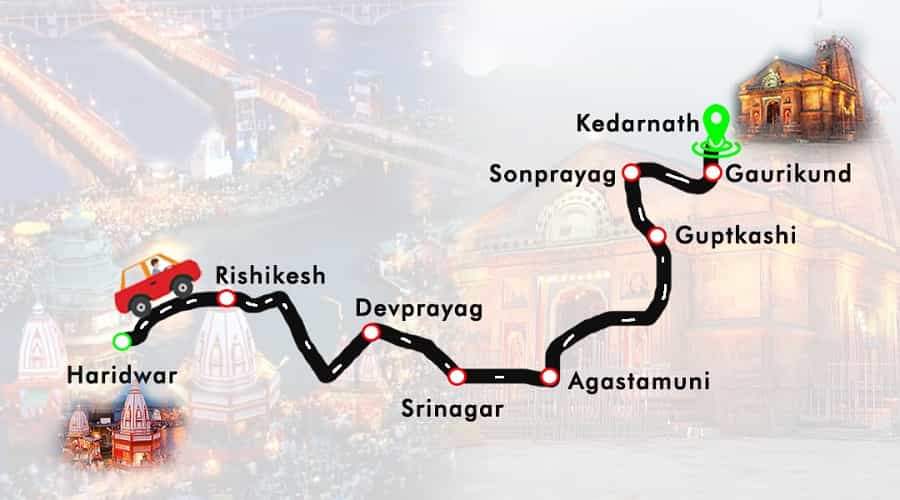
Planning Your Journey
Choosing the Right Time
The yatra usually commences in late April or early May and concludes in November, before the winter snowfall renders the region inaccessible. The summer months offer pleasant weather for the journey, with temperatures ranging from cool to mildly cold, creating an ideal atmosphere for both trekking and worship.
Travel and Accommodation
Travelers often start from Haridwar or Rishikesh, both well-connected cities in Uttarakhand. The journey from these points provides an opportunity to immerse oneself in the spiritual aura that pervades the region. Accommodation options along the route cater to different budgets and preferences, from modest guesthouses to comfortable lodges.
How to Reach
By Air:
The nearest airport to Kedarnath is the Jolly Grant Airport in Dehradun, approximately 239 kilometers away. From the airport, you can hire a taxi or use public transportation to reach Haridwar or Rishikesh, the common starting points for the yatra.
By Helicopter:
For a quicker and more convenient journey, helicopter services are available to Kedarnath. The helipad is located near the temple, offering stunning aerial views of the surrounding landscapes. This option is ideal for those with limited time or physical limitations.
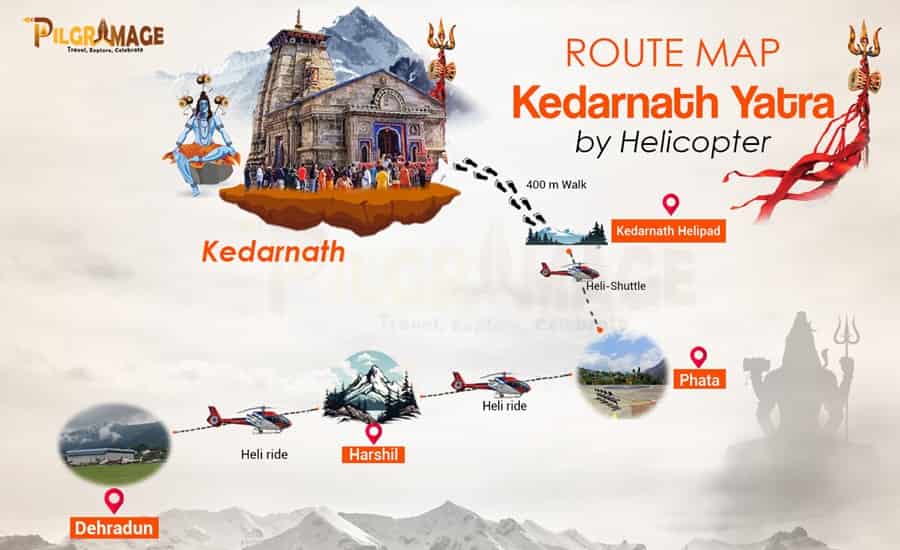
By Rail:
Haridwar and Rishikesh are the nearest railway stations to Kedarnath. Trains from major cities in India connect to these stations. Once you arrive, you can proceed by road to Gaurikund, the base camp for the trek.
By Road:
- From Delhi: The road distance from Delhi to Kedarnath is around 447 kilometers. You can travel by road to Haridwar or Rishikesh and then proceed to Gaurikund.
- From Haridwar: Haridwar is approximately 125 kilometers from Kedarnath. You can hire a taxi or take a bus to reach Gaurikund.
- From Rishikesh: The distance between Rishikesh and Kedarnath is about 189 kilometers. You can travel by road to Gaurikund from Rishikesh.
- From Dehradun: Dehradun is around 261 kilometers away from Kedarnath. Many travelers choose to stop in Dehradun before proceeding to Haridwar or Rishikesh.
By Trekking:
The most common way to reach Kedarnath is by trekking from Gaurikund. The trek is approximately 16 kilometers and offers breathtaking views of nature’s beauty. The route includes Rambara Bridge, Jungle Chatti, Bheembali, Linchauli, Kedarnath Base Camp, and finally, the sacred Kedarnath Temple.
The Route Map Unveiled
Haridwar to Rishikesh
The journey often begins at Haridwar, a city known for its sacred Ganges River and its evening Ganga Aarti. Pilgrims take a dip in the holy river, seeking purification and blessings for their journey. From Haridwar, the route meanders towards Rishikesh, often referred to as the “Gateway to the Garhwal Himalayas.” Rishikesh’s serene ashrams and yoga centers set the tone for the spiritual voyage ahead.
Rishikesh to Guptkashi
From Rishikesh, the route leads to Guptkashi, a quaint town situated at an elevation of about 1,319 meters. The town is famous for the Vishwanath Temple, dedicated to Lord Shiva. This leg of the journey introduces you to the stunning landscapes of the region, as you gradually ascend to higher altitudes.
Guptkashi to Kedarnath
The final stretch to Kedarnath involves a trek or pony ride, depending on your preference and physical condition. The trekking path is well-defined and offers mesmerizing views of the surrounding mountains, lush valleys, and glistening rivers. Along the way, you’ll encounter picturesque locales like Gaurikund and Rambara, each with its unique charm.
Trekking Route from Gaurikund to Kedarnath
Embark on an unforgettable trekking journey from Gaurikund to the revered Kedarnath Temple, following this scenic route:
- Gaurikund to Rambara Bridge: A 6-kilometer trek that takes you to the iconic Rambara Bridge.
- Rambara Bridge to Jungle Chatti: A 4-kilometer stretch leading you through the picturesque Jungle Chatti.
- Jungle Chatti to Bheembali: Cover 3 kilometers to reach the serene destination of Bheembali.
- Bheembali to Linchauli: Trek 4 kilometers amidst nature’s beauty to reach the peaceful Linchauli.
- Linchauli to Kedarnath Base Camp: Progress 4 kilometers to the Kedarnath Base Camp.
- Kedarnath Base Camp to Kedarnath Temple: A final 1-kilometer stretch to the sacred Kedarnath Temple.
Exploring New Trek Routes to Kedarnath
Since 2016, two additional trek routes have been introduced for Kedarnath, offering exciting alternatives to the traditional path:
- Chaumasi to Kedarnath: Via the Chaumasi – Kham – Rambara route, covering a total distance of 18 kilometers.
- Trijuginarayan to Kedarnath: This route spans 15 kilometers and takes you through the picturesque village of Trijuginarayan.
Road Distance Chart to Kedarnath from Major Cities
- Delhi to Kedarnath: Approximately 457 kilometers. Common route via Haridwar or Rishikesh.
- Haridwar to Kedarnath: About 239 kilometers. Popular starting point for the yatra. Route includes Guptkashi and Gaurikund.
- Rishikesh to Kedarnath: Around 216 kilometers. Another gateway to Kedarnath. Route parallels Haridwar with Guptkashi and Gaurikund stops.
- Dehradun to Kedarnath: Approximately 254 kilometers. Not a starting point, but a rest stop before Haridwar or Rishikesh.
- Guptkashi to Kedarnath: Roughly 33 kilometers. Important halt on the way. Connects to Gaurikund and the trek to Kedarnath.
- Sonprayag to Kedarnath: About 20 kilometers. Connects to Gaurikund for the final trek to Kedarnath.
- Gaurikund to Kedarnath: Around 16-18 kilometers. Base of the trek to Kedarnath. Involves steep paths and varied weather conditions.
- Gurgaon to Kedarnath: 491 kms
- Meerut to Kedarnath: 405 kms
- Shimla to Kedarnath: 493 kms
- Jaipur to Kedarnath: 730 kms
- Chandigarh to Kedarnath: 432 kms
- Lucknow to Kedarnath: 754 kms
- Mumbai to Kedarnath: 1928 kms
- Chennai to Kedarnath: 2610 kms
- Bengalore to Kedarnath: 2575 kms
- Pune to Kedarnath: 1456 kms
- Ahmedabad to Kedarnath: 1429 kms
- Hyderabad to Kedarnath: 1989 kms
- Kochi to Kedarnath: 3115 kms
- Kolkata to Kedarnath: 1699 kms
- Bhubaneswar to Kedarnath: 2192 kms
- Ranchi to Kedarnath: 1027 kms
- Bhopal to Kedarnath: 1269 kms
- Guwahati to Kedarnath: 2303 kms
Kedarnath Route Map from Major Parts of India
If you’re planning a journey to the sacred land of Kedarnath, here’s a guide on how to reach from major parts of India:
Route from Delhi:
Travel along the well-trodden path from Delhi to Kedarnath:
- Take NH 334 to reach Haridwar.
- Continue on NH 7 to reach Rishikesh.
- Finally, follow NH 58 to reach the divine destination of Kedarnath.
Route from Mumbai:
Embark on your pilgrimage from Mumbai to Kedarnath via these highways:
- Follow NH 48 to reach Ahmedabad.
- Take NH 27 to reach Udaipur.
- Proceed on NH 48 to Delhi.
- Continue your journey from Delhi as detailed in the previous route.
Route from Bangalore:
For pilgrims from Bangalore, chart your course to Kedarnath through these roads:
- Traverse NH 44 to reach Hyderabad.
- Progress on NH 65 to Nagpur.
- Journey along NH 44 to Bhopal.
- Take NH 52 to Agra.
- Finally, follow the route from Agra to Kedarnath.
Route from Kolkata:
If Kolkata is your starting point, navigate this path to Kedarnath:
- Travel on NH 19 to reach Varanasi.
- Continue on NH 31 to reach Gorakhpur.
- Proceed on NH 27 to reach Lucknow.
- Take NH 730A to Ayodhya.
- Traverse NH 330 to reach Allahabad.
- Follow NH 135 to Rudraprayag.
- Conclude your journey by taking NH 107 to Gaurikund.
Sonprayag
This scenic spot marks the confluence of the Basuki and Mandakini rivers. Surrounded by towering peaks and dense forests, Sonprayag is a place of tranquility. Many pilgrims take a moment here to reflect and prepare themselves mentally for the rest of the journey.
Gaurikund
Gaurikund, situated at an altitude of approximately 1,982 meters, holds a special place in the hearts of pilgrims. Legend has it that Goddess Parvati performed intense penance here to win Lord Shiva’s heart. The natural thermal springs near Gaurikund are believed to have medicinal properties and are often used for a refreshing bath before the ascent.
Rambara
As you continue your journey, you’ll come across the enchanting meadows of Rambara. The highlight of this area is the suspension bridge known as the Rambara Bridge. Crossing this bridge amidst the pristine surroundings is both exhilarating and serene, offering a brief respite for weary travelers.
Reaching the Divine Destination
Kedarnath Temple Complex
The Kedarnath Temple complex stands as a testament to human devotion and architectural excellence. At an altitude of around 3,583 meters, the temple’s stone-carved architecture stands in stark contrast to the rugged terrain. The spirituality within its walls is palpable and resonates with pilgrims from around the world. The temple opens its doors for a limited period each year due to the harsh weather conditions, making the yatra even more special.
Bhairavnath Temple
For those seeking an extra dose of adventure, a short trek from Kedarnath leads to the Bhairavnath Temple. The trek offers breathtaking panoramic views of the surrounding peaks, and the temple itself is perched at an altitude of about 3,415 meters. The journey to Bhairavnath Temple is not only a physical one but also a journey within, as the stunning vistas provide a backdrop for inner reflection.
Challenges and Precautions
Weather Considerations
The weather in the Himalayas can be highly unpredictable, ranging from clear skies to sudden rainfall or snowfall. Proper clothing and gear are essential to tackle these changes. Layering your clothing helps in adjusting to the temperature fluctuations.
Altitude Sickness
Due to the high altitude, some yatris might experience altitude-related health issues, commonly known as altitude sickness. Acclimatization is crucial, and it’s recommended to take the journey at a moderate pace. Staying hydrated and avoiding alcohol during the trek can help mitigate the effects of altitude sickness.
Conclusion
The Kedarnath Yatra route map is more than just a physical route; it’s a path of self-discovery, devotion, and reverence. Every step you take resonates with the prayers and footsteps of countless pilgrims before you. Are you ready to embrace the divine calling of Kedarnath Yatra and embark on a journey that promises not only a destination but a profound inner awakening?
Frequently Asked Questions (FAQs)
- Is the yatra suitable for senior citizens?
- Yes, the yatra can be undertaken by senior citizens with proper medical advice and preparation. It’s advisable to consult a doctor before embarking on the journey.
- Are there medical facilities along the route?
- Yes, there are medical aid centers and facilities at various points along the route to provide assistance in case of emergencies. However, it’s always wise to carry basic first aid supplies.
- Can I undertake the journey without a guide?
- While it’s possible to undertake the journey without a guide, having a knowledgeable guide can enhance the experience. A guide can provide insights into the history, culture, and significance of the places you visit.
- What should I pack for the yatra?
- Pack warm clothing, comfortable and sturdy shoes, a walking stick, a hat, sunglasses, sunscreen, a raincoat, personal medications, and essential toiletries. It’s also recommended to carry a refillable water bottle and snacks.
- Is photography allowed within the temple premises?
- No, photography is generally not allowed inside the temple complex as a mark of respect for the sanctity of the place. However, you can capture the breathtaking views of the surrounding landscapes outside the temple.


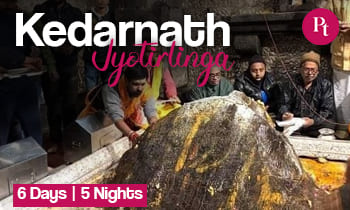
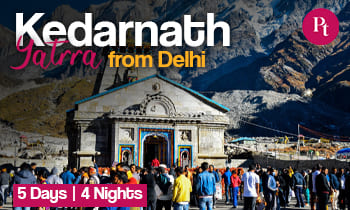


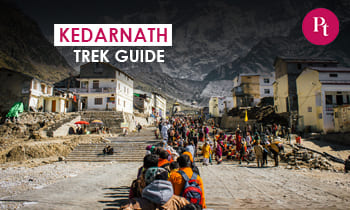
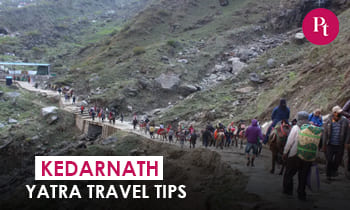
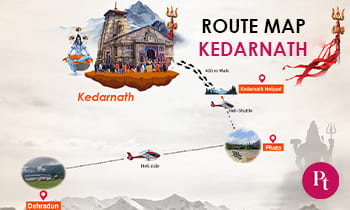
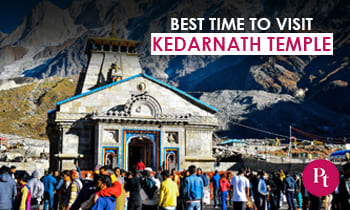
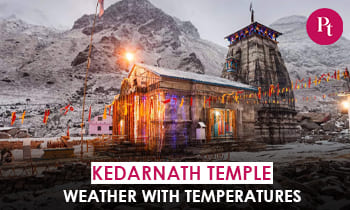
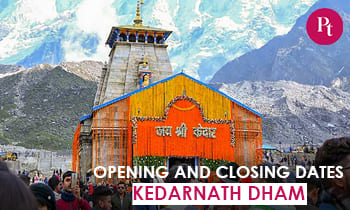

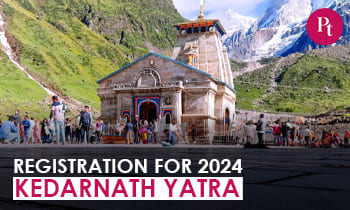
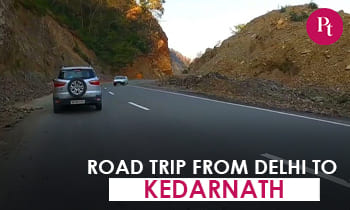

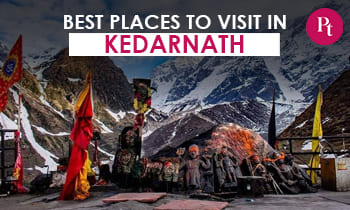
 Call
Call WhatsApp
WhatsApp Enquiry
Enquiry